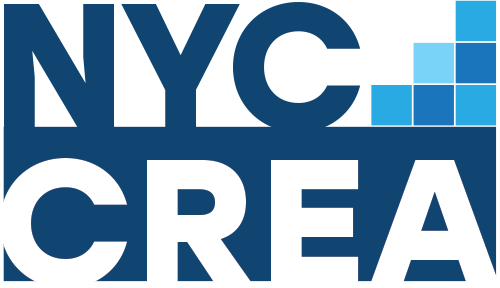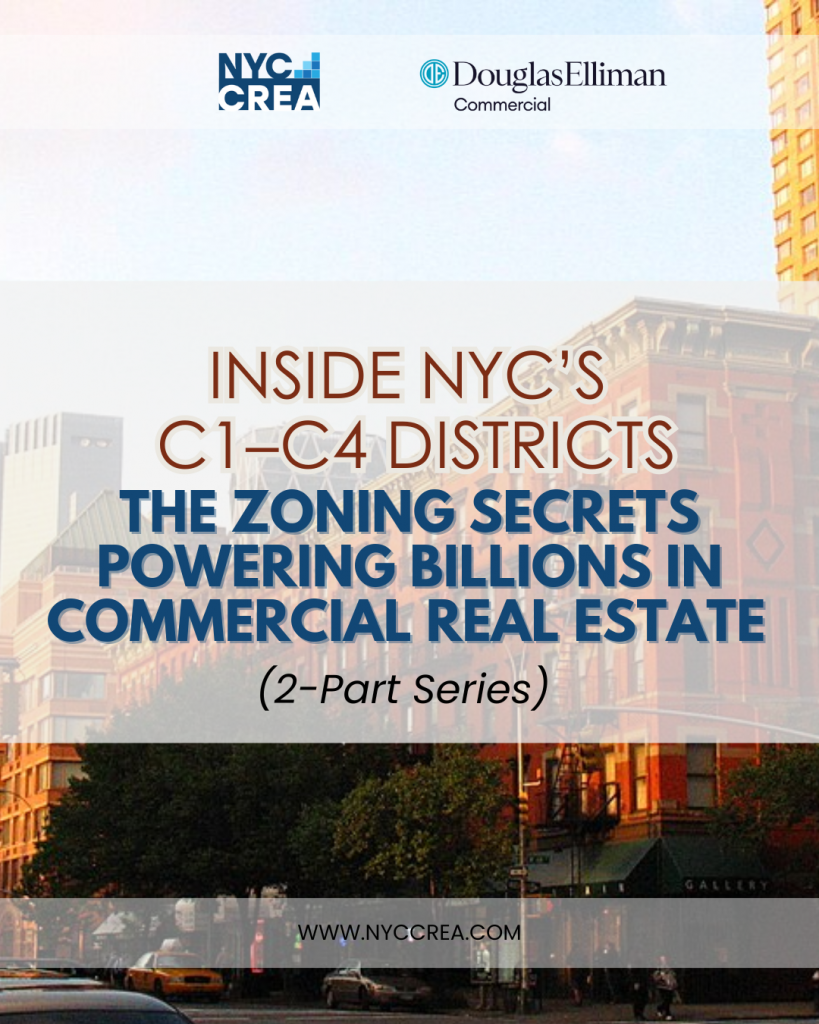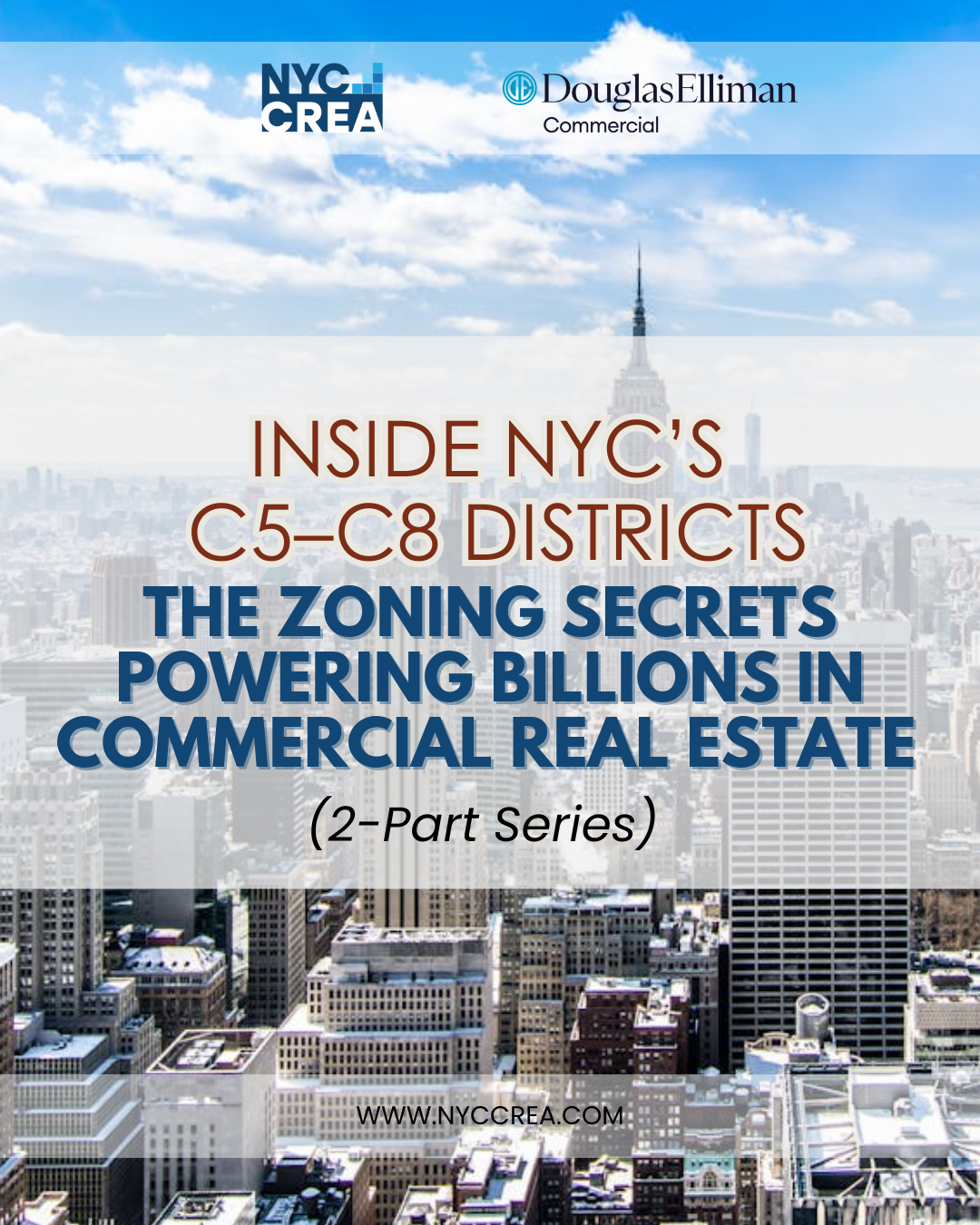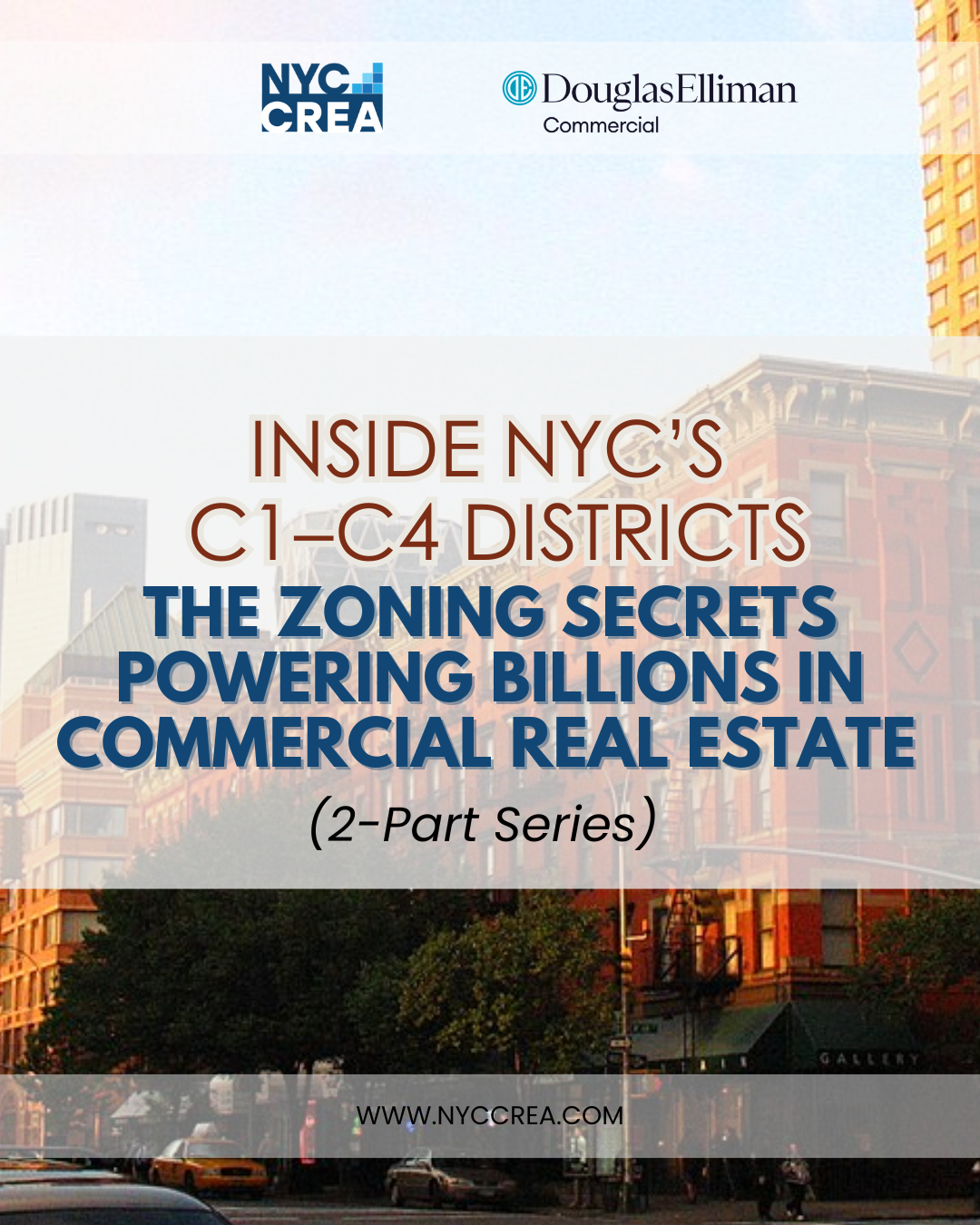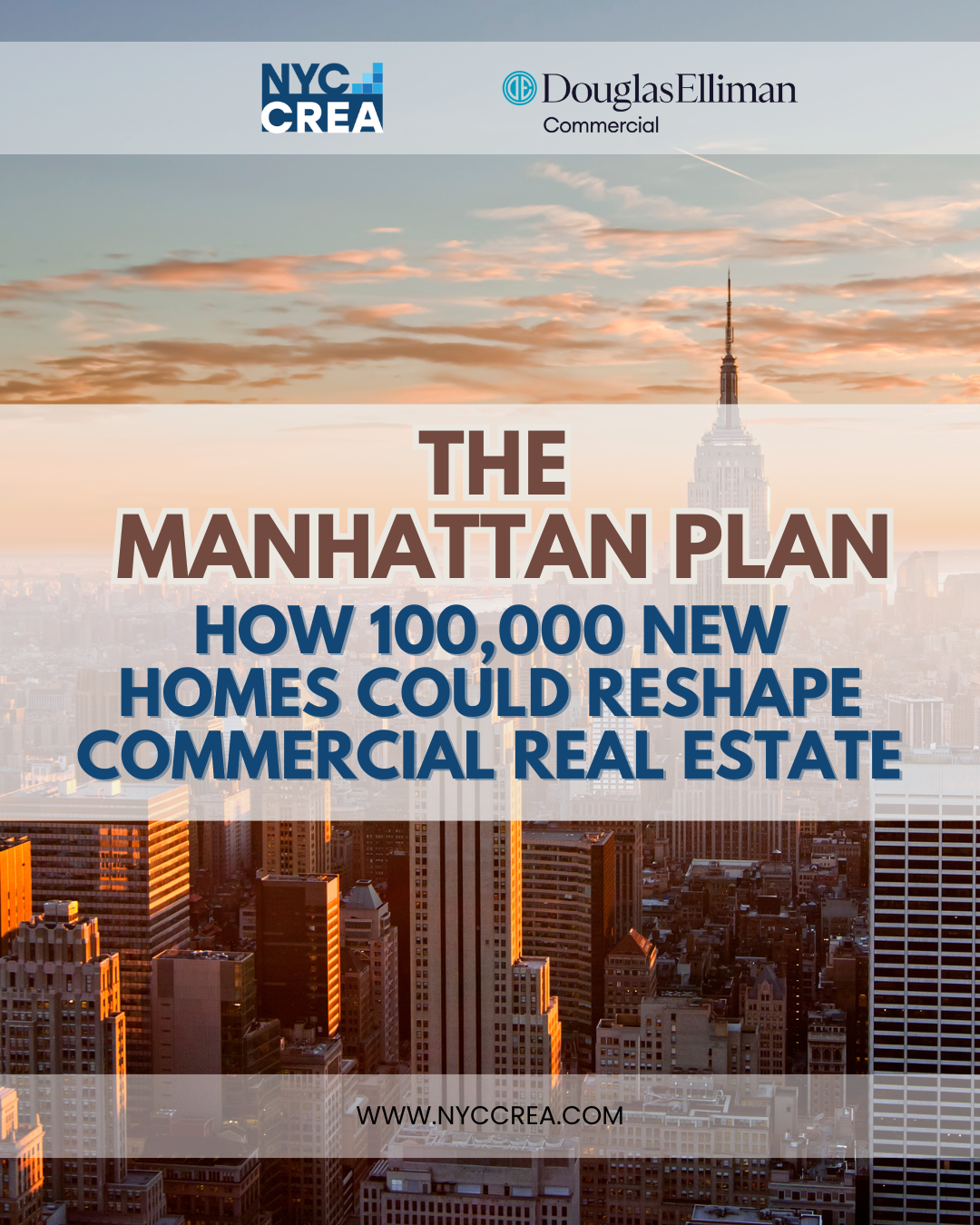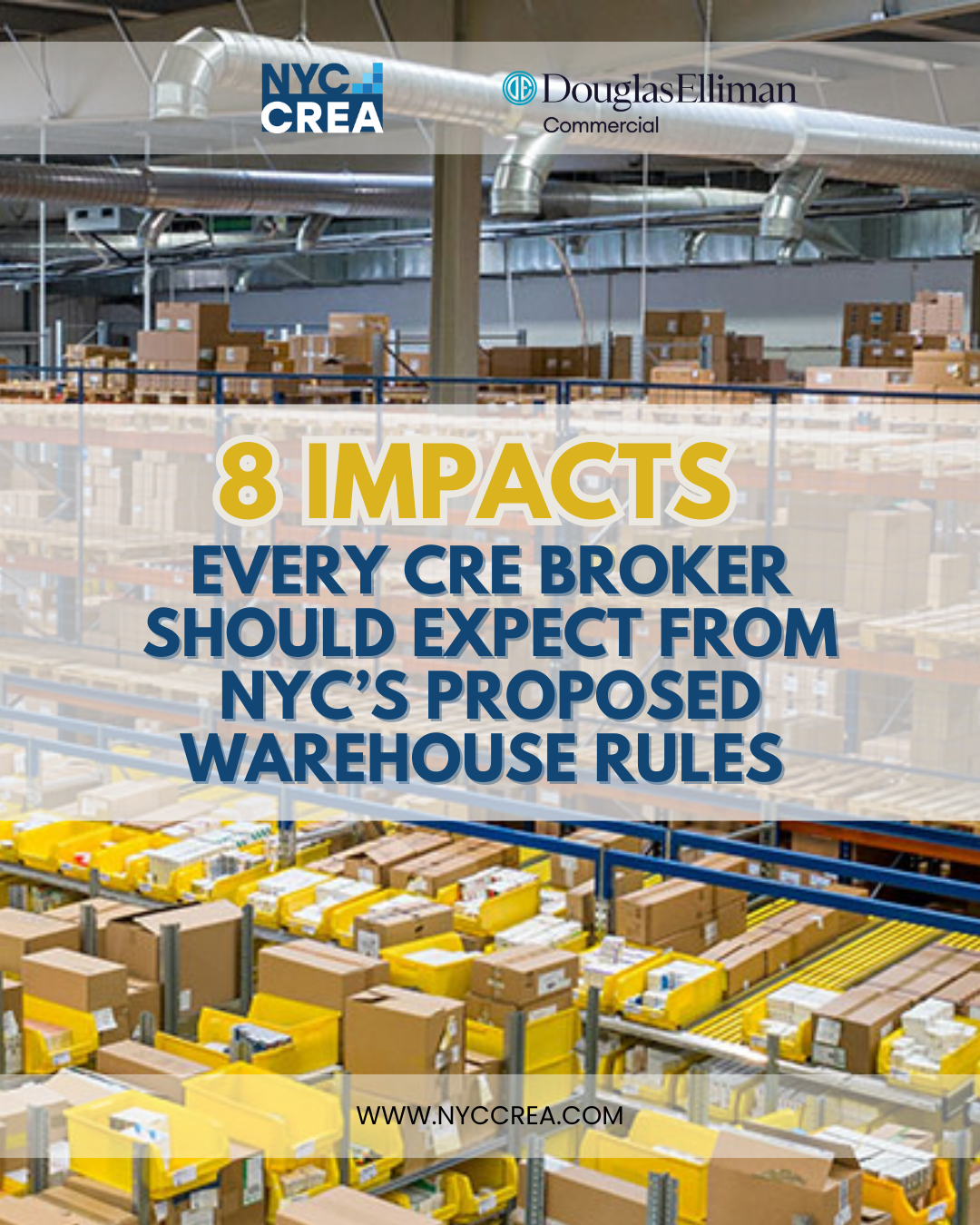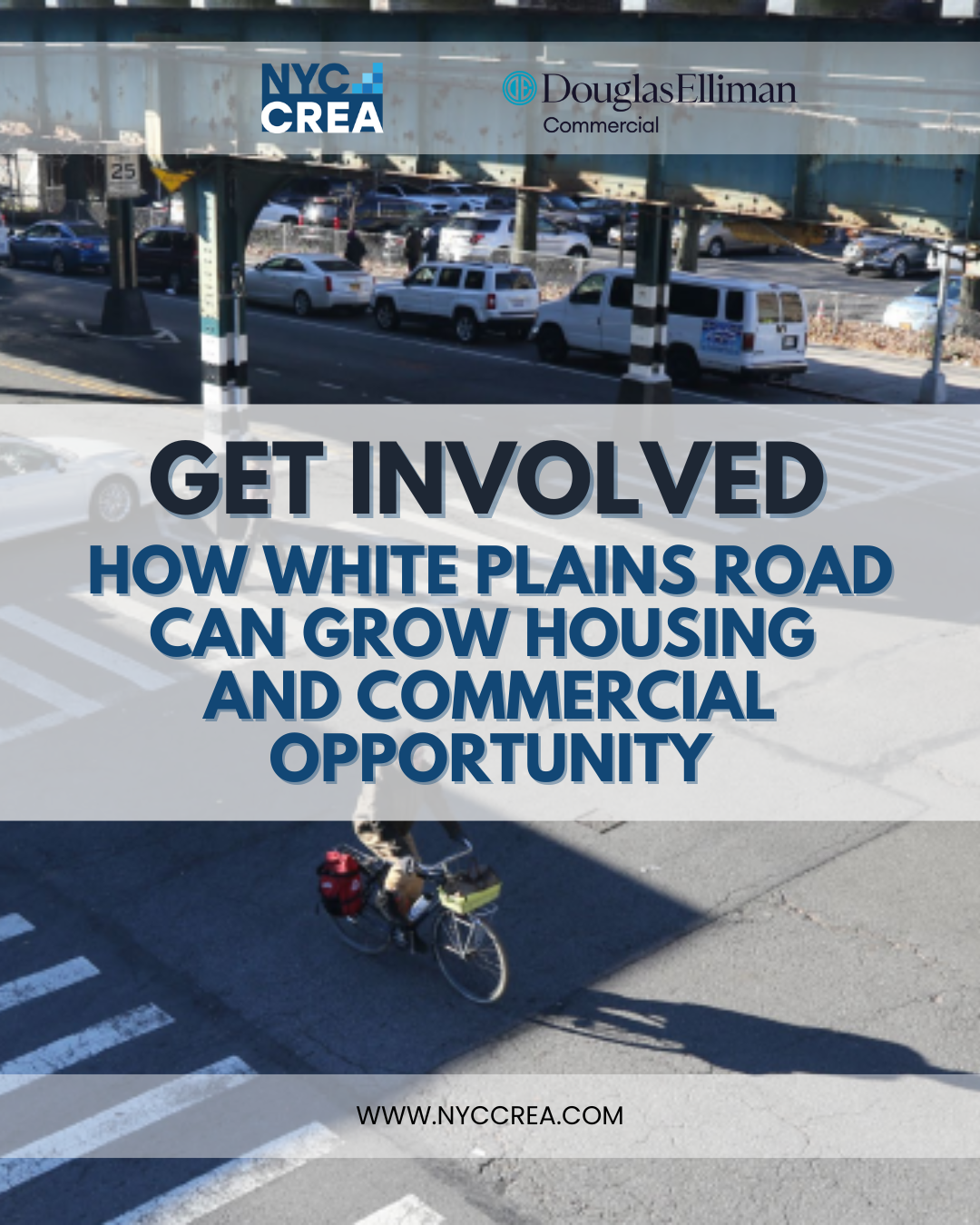November 5, 2025
Highlights:
- NYC’s eight commercial districts define where and how businesses operate — from small community shops to high-rise commercial hubs.
- C1 to C4 districts reflect the city’s diverse retail ecosystem, from neighborhood groceries to regional shopping destinations.
- Evolving density, parking, and zoning rules are redefining the growth and investment potential of NYC’s commercial real estate (CRE) market.
The City That Zones for Success
New York City’s identity as a global commercial powerhouse is built — quite literally — on zoning. With eight distinct commercial districts, the city balances neighborhood convenience with regional retail powerhouses. Each district carries its own identity, purpose, and development potential, influencing not just where businesses thrive, but how commercial real estate values evolve.
Among these, the C1 to C4 districts form the backbone of the city’s retail and service economy — connecting local neighborhoods to major borough centers and driving much of the small-to-medium-scale commercial investment in the city.

NYC’s Commercial Districts 1 to 4
- C1 & C2 – The Neighborhood Lifelines
Found along major avenues like Second and Lexington on the Upper East Side or Columbus and Amsterdam on the Upper West Side, these zones host grocery stores, dry cleaners, drugstores, cafés, and restaurants that serve daily neighborhood needs.- C1 districts focus on essential retail and service shops.
- C2 districts allow a slightly wider range of uses — including funeral homes and repair services.
- Commercial uses are limited to one or two floors and must be below residential units.
- FAR (Floor Area Ratio): up to 2.0, with residential bulk determined by the equivalent residential zoning (e.g., R7 or R10A).
- Off-street parking: generally not required in mass-transit-served areas.
- C3 & C3A – Waterfront Recreation Zones
Designed for leisure and recreation, these districts line the city’s coastlines, supporting boating, fishing, and waterfront retail like ice cream shops or equipment rentals.- Found in areas like City Island, Mill Basin, and Throgs Neck.
- FAR: 0.5, building height capped at 30 feet.
- Residential development allowed under low-density rules (R3-2 and R3A).
- High off-street parking requirements due to limited transit access.
- C4 – The Regional Retail Powerhouses
Serving as borough-wide shopping and entertainment centers, C4 districts house large-scale retail, offices, and entertainment venues that attract citywide foot traffic.- Located in Flushing (Queens), Fordham Road (Bronx), and parts of Harlem and Broadway (Manhattan).
- Permitted uses include department stores, theaters, and specialty retail (Use Groups 5, 6, 8, 9, 10, 12).
- FAR varies by subdistrict: from 1.0 (C4-1) to 10.0 (C4-7).
- Density bonuses available for public plazas or inclusionary housing.
- Parking requirements depend on transit accessibility — high in outer-borough malls, low in central Manhattan zones.

Impacts on Commercial Real Estate
- Zoning Drives Value
C1 and C2 overlays in residential areas create high-demand mixed-use opportunities — ideal for small investors seeking stable rental income from ground-floor retail. - Transit Access = Density Potential
With less parking required in mass-transit corridors, developers in C1–C4 zones can maximize floor space for retail or residential mix, increasing yield per square foot. - Retail Evolution
As e-commerce shifts consumer behavior, local neighborhood retail in C1–C2 zones remains resilient — driven by service-based and experiential businesses. - Regional Hubs as CRE Magnets
C4 districts continue attracting institutional investment, particularly in transit-rich corridors like Jamaica and Flushing, where high FARs and zoning bonuses offer scalable development potential. - Contextual Constraints
Height and setback rules ensure street continuity in contextual zones (C4-4D, C2-8A), preserving urban fabric while limiting excessive commercial sprawl.

Zoning as NYC’s Hidden Real Estate Engine
New York City’s commercial zoning map is more than a bureaucratic framework — it’s a growth blueprint. From C1 corner stores that sustain daily life to C4 retail corridors that anchor borough economies, these districts define how and where capital flows in the city’s real estate ecosystem.
For investors and developers, understanding these designations isn’t just about compliance — it’s about strategic positioning. C1–C2 districts offer long-term neighborhood stability, while C4 zones present high-density, high-return opportunities for retail, office, and mixed-use development.
As urban design and market forces continue to evolve, one truth remains: in NYC real estate, knowing your district can mean the difference between a solid investment and a missed opportunity.
For the latest news, proven strategies, and exclusive opportunities in commercial real estate in New York City and Western Nassau County NY, visit us at www.nyccrea.com
FOLLOW US:
Facebook: www.facebook.com/newyorkcityCREA
Instagram: www.instagram.com/nyccrea
LinkedIn: www.linkedin.com/company/nyccrea
Reference:
https://www.nyc.gov/content/planning/pages/zoning/zoning-districts-guide/commercial-districts
